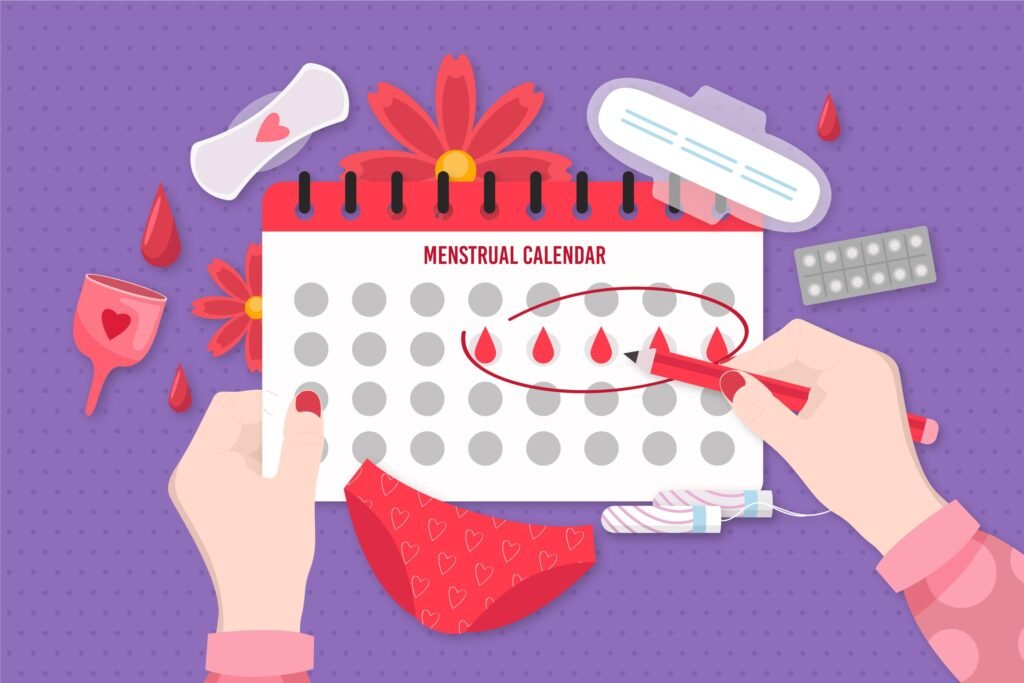The Luteal Lowdown: Hormones, Mood, and the Science of Cycles
Asmita Adya
March 2025
The time between ovulation and menstruation, known as the luteal phase, is often marked by emotional variability and instability in menstruating individuals. Feelings of negative affect, physical discomfort, and general malaise commonly plague individuals as the uterine lining thickens in preparation for pregnancy or, if fertilization does not occur, menstruation.

The Biological Basis
During ovulation, the hypothalamus secretes a surge of gonadotropin-releasing hormone (GnRH) to the pituitary gland. In response, the anterior pituitary gland releases luteinizing hormone (LH), which stimulates the gonads, leading to the luteal phase. During this phase, progesterone reaches its peak concentration. Prior to this, during the follicular phase, the anterior pituitary secretes follicle-stimulating hormone (FSH), which leads to a peak in estradiol levels. Estrogen, an ovarian hormone critical to well-being, plays a key role in mood regulation. Low estrogen levels have been implicated in increased vulnerability to depression and impaired emotional regulation. Thus, during the luteal phase, when estrogen levels decline, studies have shown that women exhibit more frequent negative affect and a heightened stress response [1]. Additionally, estradiol contributes to reward processing, as it has a stimulatory, activational effect and interacts with dopamine [2].
However, this raises the question: does the likelihood of experiencing negative affect stem solely from decreased estrogen, or does progesterone itself play a direct role? The lack of conclusive clinical evidence remains a significant barrier to answering this question.
The Implications of Hormonal Contraceptives
Hormonal contraceptives and their effects may serve as a clue. In the 1960s, ‘the pill’ revolutionized hormonal contraception in the United States. The pill typically contains ethinyl estradiol or mestranol (synthetic estrogen) and progestin (synthetic progesterone), though some formulations are progestin-only. The androgenic properties of different progestins vary, ranging from strongly anti-androgenic to strongly androgenic. The typical dose ranges from 0.1 to 3.0 mg per pill.
Although the exact mechanism of action is not fully understood, hormonal contraceptives are thought to “mimic pregnancy.” During pregnancy, endogenous estrogen and progesterone levels rise, exerting negative feedback on hypothalamic GnRH secretion. Similarly, contraceptives prevent pregnancy by mimicking these negative feedback effects. Exogenous hormones from the pill inhibit GnRH release, thereby suppressing FSH and LH secretion from the anterior pituitary. As a result, follicular development is inhibited due to reduced FSH, and ovulation does not occur due to the absence of an LH surge. While the extent of hormonal suppression varies by contraceptive formulation, this chronic suppression prevents pregnancy. Women using hormonal contraceptives typically have endogenous hormone concentrations equivalent to or lower than those observed in the early follicular phase of naturally cycling women. Although hormone levels usually return to baseline within months after discontinuation, some studies suggest lower levels persist for years [3].
Why does this matter? Women who use hormonal contraceptives often report negative side effects such as mood changes, diminished libido, and exacerbation of underlying psychiatric conditions [4]. Furthermore, contraceptives have been implicated in structural and functional changes in brain regions involved in affective and reward processing [5]. These effects highlight the profound impact of exogenous hormone manipulation. Since many contraceptive methods rely on progestin as a primary component, it is plausible that progesterone plays a key role in negative affect, though further research is needed to establish a definitive correlation.
Plausible Physical and Mental Effects
Possible physical and mental effects of elevated progesterone include fatigue, negative affect, and mood fluctuations [6]. These effects can impair emotional and physical functioning and exacerbate underlying psychiatric conditions. These hormonal fluctuations occur independently of individual control; menstruation follows its cyclical course, only ceasing at menopause. So, never dismiss a woman as “too hormonal”—she is simply functioning as nature intended.
References
[1] Albert, K. M., & Newhouse, P. A. (2019). Estrogen, stress, and depression: Cognitive and biological interactions. Annual Review of Clinical Psychology, 15, 399–423. https://doi.org/10.1146/annurev-clinpsy-050718-095557.
[2] Beltz, A. M., & Moser, J. S. (Year). Ovarian hormones: A long overlooked but critical contributor to cognitive brain structures and function. Annals of the New York Academy of Sciences, Special Issue: The Year in Cognitive Neuroscience.
[3] Taylor, C. M., Pritschet, L., & Jacobs, E. G. (2021). The scientific body of knowledge – whose body does it serve? A spotlight on oral contraceptives and women’s health factors in neuroimaging. Frontiers in Neuroendocrinology, 60, 100874. https://doi.org/10.1016/j.yfrne.2020.100874
[4] Martell, S., Marini, C., Kondas, C. A., & Deutch, A. B. (2023). Psychological side effects of hormonal contraception: A disconnect between patients and providers. Journal of Women’s Health, 32(1), 45-53. https://doi.org/10.1089/jwh.2022.0467
[5] Brønnick, M. K., Økland, I., Graugaard, C., & Brønnick, K. K. (2020). The effects of hormonal contraceptives on the brain: A systematic review of neuroimaging studies. Frontiers in Psychology, 11, Article 556577. https://doi.org/10.3389/fpsyg.2020.556577
[6] Standeven, L. R., McEvoy, K. O., & Osborne, L. M. (2020). Progesterone, reproduction, and psychiatric illness. Best Practice & Research Clinical Obstetrics & Gynaecology, 69, 108–126. https://doi.org/10.1016/j.bpobgyn.2020.06.001





